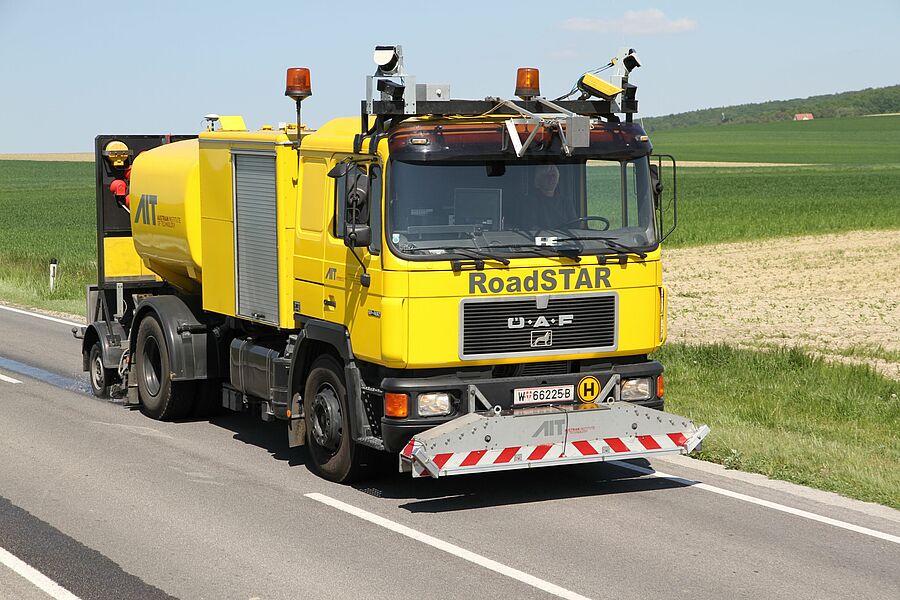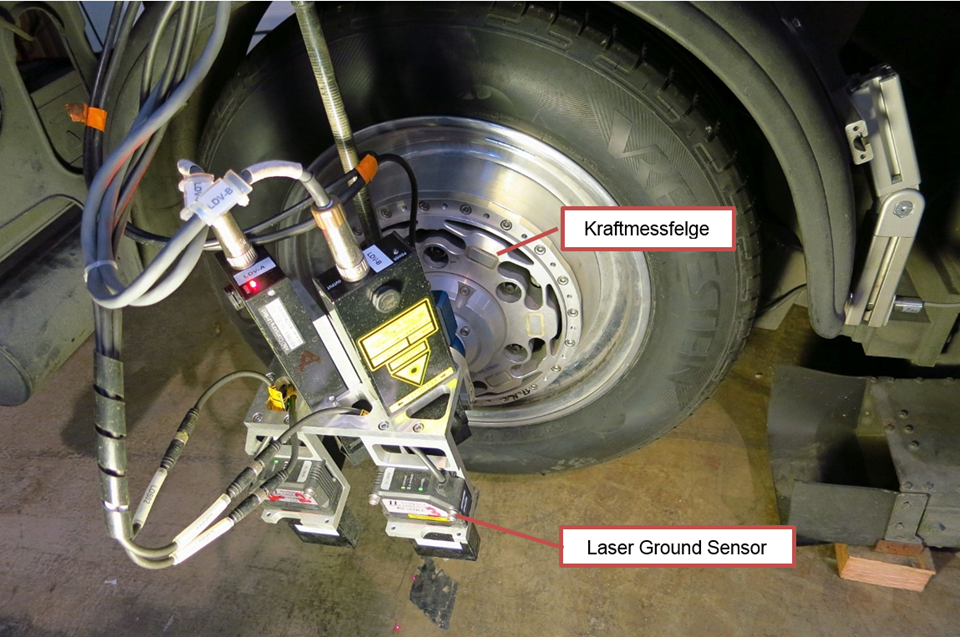Rolling resistance optimisation on motorways
In the RoWi project, the rolling resistance of road surfaces was investigated with the aim of making a contribution to decarbonisation by optimising the surface design.
While there has been a classification of rolling resistance properties for tyres in the EU since 2012, no comparable system is known for road surfaces or specific construction methods. Different methods for measuring the rolling resistance of road surfaces are described, but only two measuring systems are available in Europe, but only in research projects.
Detail of the instrument for measuring the rolling resistance
The following objectives were pursued in the RoWi project: Analysis of the literature on measuring the rolling resistance of road surfaces, on the relationship between rolling resistance and fuel consumption or CO2 emissions, and on initiatives to optimise the rolling resistance of road surfaces. In this context, the existing road pavements on the ASFINAG network were analysed in order to identify the types of surfaces for which the optimisation of the pavement design offers the greatest leverage for CO2 reduction due to reduced rolling resistance. Furthermore, a method for measuring the rolling resistance by means of direct force measurement in the axle of the rolling wheel was developed. Rolling resistance measurements were carried out on various types of surface courses and the influencing properties texture and longitudinal evenness as well as temperatures were determined. The measurements showed that the largest influencing factor is the tyre temperature (which affects the tyre internal pressure), which far outweighs the influence of the road surface.
The recommendation for the road maintainer is to limit the macrotexture of the surface layers and to optimize the longitudinal evenness.
Dependence of rolling resistance on temperature and tyre pressure
Facts and figures
Duration: 09/2018-01/2020
Research consortium: AIT Austrian Institute of Technology GmbH / Technische Universität Graz, Institut für Fahrzeugtechnik




![[Translate to English:] Abhängigkeit des Rollwiderstandes von Temperatur und Reifendruck](/fileadmin/mc/Transport_Technologies/TIT/Projects/Road_Condition_Monitoring/RoWi-Abhaengigkeit_RoWi.png)

